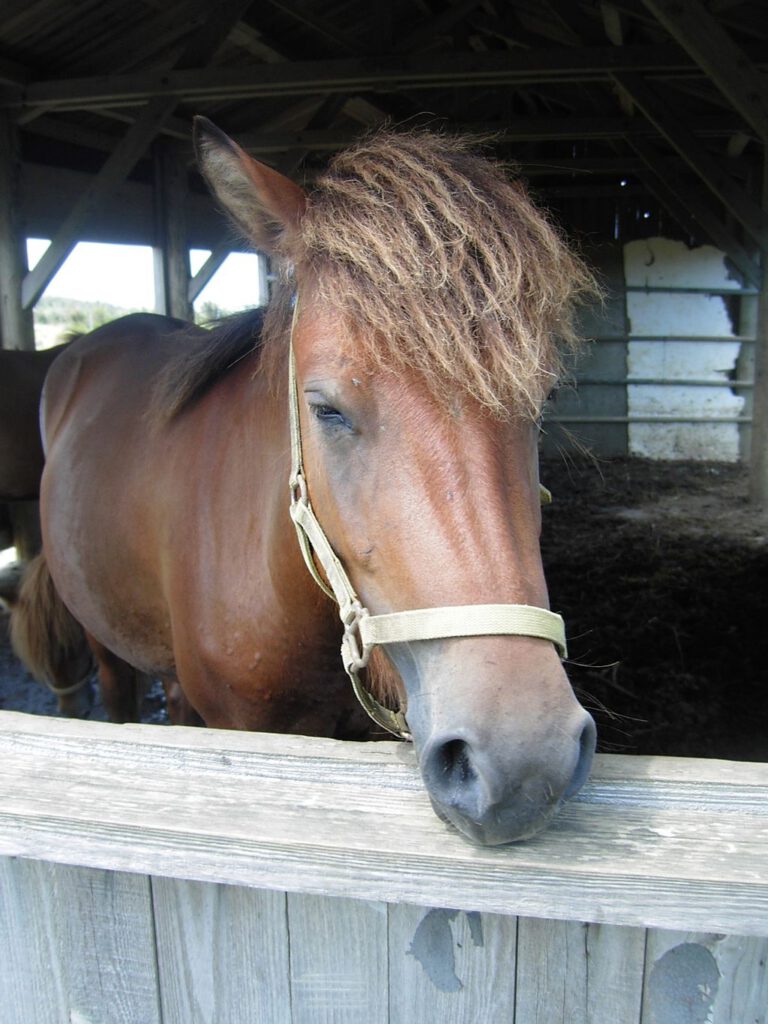Last year, under participation of ten grand masters of Okinawa karate and kobudō, a museum and memorial monument related to Ryūkyū horses have been erected in Naha City. The topic is embedded within the peace theory of Okinawa and the description carries the usual phrases, such as “since ancient times…,” “deeply rooted in the lives of the islanders…,” or “closely related to karate and kobudō.” Also, the project aims to be registered as an intangible cultural heritage, probably with the UNESCO.
While this author supports these ideas, his curiosity led him to check the history for what the officials have not mentioned in their advertising brochure.
So, what is the true history of Ryūkyū horses?
According to the dynastic records of the Ming Dynasty, already in the 1370s there were three kings in Okinawa, namely in realms called Chūzan, Sanzan, and Hokuzan. The tribute envoys of each of these once even appeared together at the Ming court, competing for the establishment of investiture and tribute trade with Ming China. The main motivation for their competition was the yield expected from the investiture and tribute trade.
Precious articles and imperial gifts began to reach Okinawa and stimulated further activities in overseas trade. In 1396, the first Chinese investiture envoy (sappōshi) reached Ryūkyū, for the enthronement of King Haniji of Hokuzan, followed in 1404 for the investiture of King Bunei of Chūzan, and in fact the Chinese Emperor bestowed the title of king to all the three leaders. This is the reason why the period is called the “Era of Three Kingdoms” (sanzan-jidai). These kingdoms were the three most powerful trading communities in Okinawa at the time, with trading ports, fortresses, armies, and settlements with technical experts, people engaged in agriculture, production and trade.
Initially, Ryūkyūan tribute to China consisted mainly of sulphur and horses, both of which were two of the most important military materials urgently needed by the Ming. As Takara pointed out:
For their battles with the Mongols the Ming required supplies and one ingredient was sulphur, indispensable for gunpowder. They also needed horses to pull their cannons to the battlefield. The Ryūkyū Islands were able to supply both.
In short, horse pasturage became a cultural standard in Okinawa due to the military demand of the Ming Dynasty. For instance, in 1374, only two years after the begin of the tribute trade relationship, the Chinese envoy Li Hao purchased a huge number of horses and took them back to China, and for the year 1383 a single Chinese purchase of nine hundred eighty (980!) horses is recorded. Together with the vast quantities of sulphur, the original Ryūkyū tribute items were of high military utility to the Chinese, who regarded Ryūkyū as a major supplier. From this reason, and because the following Ming emperors adhered to the policies and practices of Ming Taizu, Ryūkyū earned a preferential treatment which lasted long after the military-supply question of the Ming was settled.
Yes, you have read it correctly: The 500 years of Ryūkyū-Chinese investiture relation is actually based on military supplies…
BTW, above-mentioned Li Hao, on the same occasion in 1374, brought with him to Okinawa “one thousand iron utensils” and some seventy thousand pieces of earthenware. He also noted in his official report to the Chinese Emperor that the Ryūkyūans were not interested in silk, but only in iron kettles and porcelain, which subsequently were sent in greater quantities. It is no surprise that we see a coincidence in Ryūkyū’s demand of iron from China, the emergence of blacksmithing and weapons and armor production technology, the increased fighting and emphasis on military preparation on Okinawa as indicated by the large number of fortresses built.
© 2022, Andreas Quast. All rights reserved.

